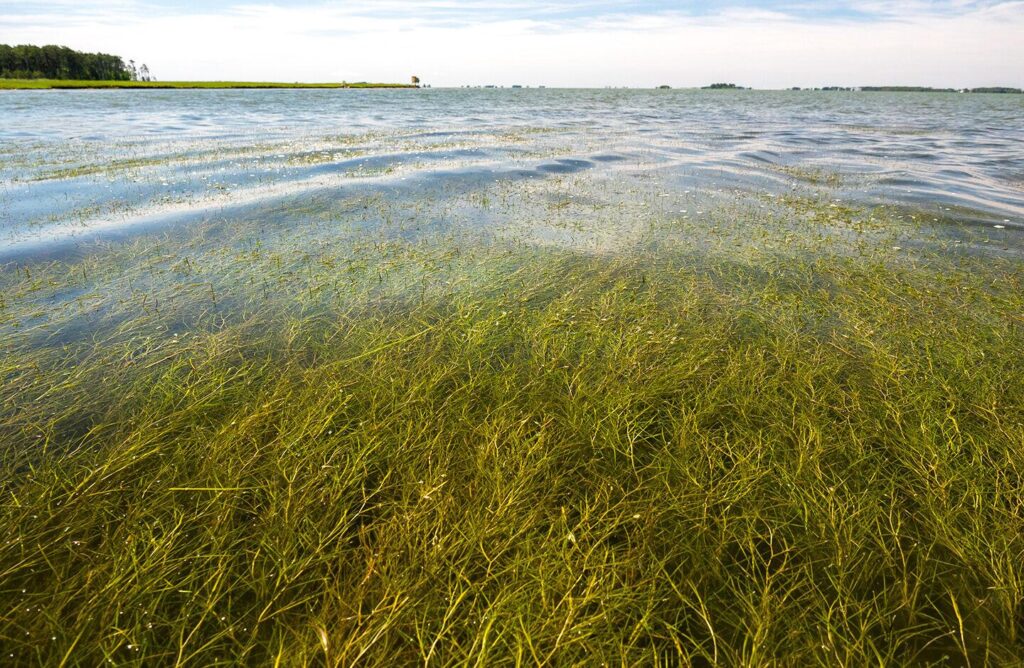
Water quality standards are aimed at ensuring Bay water is clear enough for underwater grass beds to thrive, and to increase the amount of dissolved oxygen available for fish and other aquatic life. Photo by Dave Harp/Chesapeake Bau Journal.
By Karl Blankenship
The Chesapeake Bay Journal
Chesapeake Bay water quality improved slightly during its most recent three-year assessment period though it remains far from overall goals, according to recently released data from the state-federal Bay Program partnership.
The figures show that 29.8% of the Bay and its tidal tributaries fully met water quality standards for dissolved oxygen, clarity and chlorophyll a (a measure of algae growth) during the 2020–2022 assessment period.
That was a slight increase from 28.1% during 2019–2021.
The Bay goal is 100% attainment of water quality standards under the federal Clean Water Act. Pollution reduction goals established for each state and major tributary in the Bay watershed are aimed at reaching that objective.
Water quality is assessed over three-year increments to help smooth the impacts of extreme weather events in any one year in the cycle. Years with heavy rainfall drive more nutrient pollution and sediment off the land and into the Bay, hurting water quality, while droughts reduce runoff and result in short-term improvements.
To measure attainment, the Bay and its tidal tributaries are divided into 92 segments. To be considered in attainment, each segment must meet all water quality criteria for that area.
The Bay’s best score was 42% attainment in 2015–2017, but water quality declined after two consecutive wetter-than-average years in 2018 and 2019. When cleanup efforts began in 1985, about 26% of the water achieved its goals.

